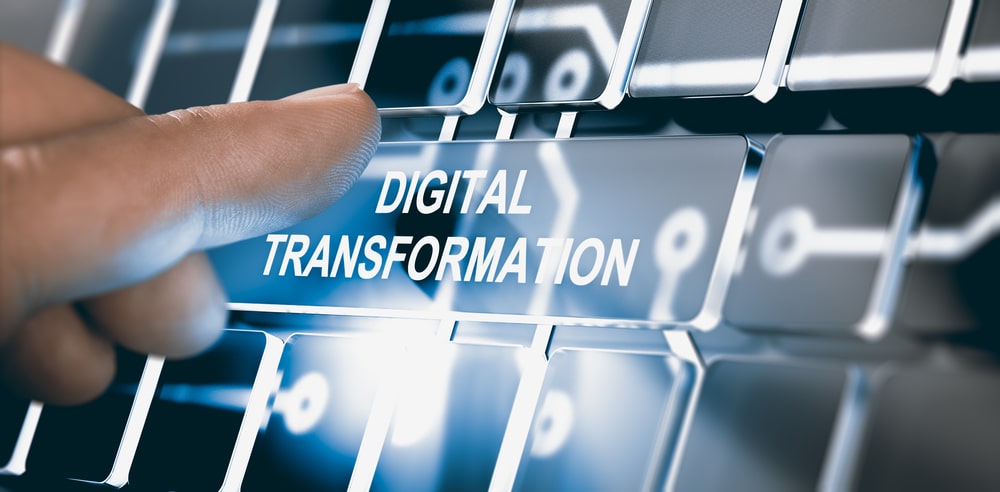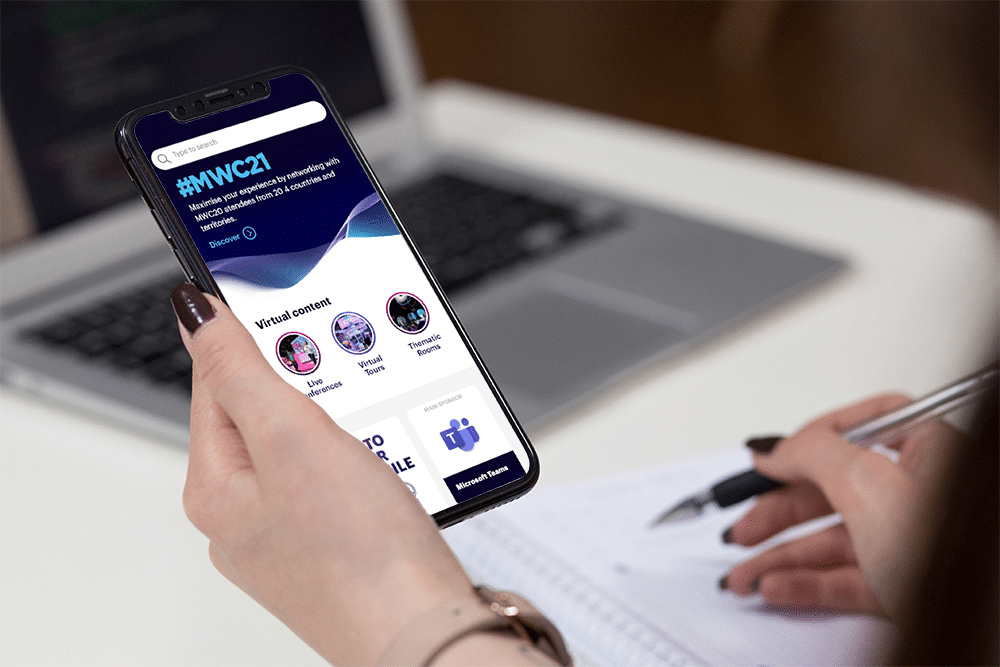
Finding the formula to combat back-to-work anxiety in STEM
Mental health is a popular topic at the moment, while the majority of us were trying to maintain a healthy routine and lifestyle while stuck indoors, it begged the question, what about after lockdown? Back to work anxiety was bad enough for some of us after months of leisure time and lie ins. But entering the next stage of eased lockdown regulation is a cause of mental health disruption for some of us, bringing a sense of unease, worry, and anxiety.
At first, the thought of losing our freedom and summer plans caused anxiety in itself, but once we got used to our new life it subsided. While some are eagerly anticipating a return to work and normality, others are genuinely distressed by it -- whether this is facilitated by concerns of the virus or facing our colleagues, there’s a real issue that needs addressing.

Digital transformation: 5 steps your company must take to succeed instead of survive
COVID-19 has changed the way companies think about digital transformation because it has accelerated the need to increase business connectivity while operating from decentralized settings.
Chief Technology Officers (CTOs) have been tasked with keeping their places of business at the forefront of the latest tech innovations. In a recent Gartner survey, 47 percent of respondents said their CTO is dedicated to modernizing core technology infrastructure in order to spur innovation.

Why IT needs smarter cloud security
For IT and security professionals, the job of keeping the enterprise secure is becoming an ever more complex proposition. In addition to the fact that distributed working looks set to become a permanent feature, keeping up with a raft of emerging new technologies while dealing with the rising tide of cyber threats means there is a growing number of tasks to keep on top of.
With time and resources in short supply, gaining full visibility of data from across the entire security stack will be key to achieving better and more comprehensive threat detection. But maintaining robust policies and controls also depends on adopting technology that is able to adapt quickly and self-learn from user behaviors.

Edward Snowden: The untold story of how one patriotic American exposed NSA surveillance
Edward Snowden might not yet be a historical figure, but he certainly is a hero. He is the whistleblower of all whistleblowers, the American who blew the lid off of Washington's spying on private citizens. But Snowden’s leak revealed that it’s not just the U.S. government that is spying on virtually every American -- big American telecommunications companies are also helping them to spy as well.
Snowden’s upbringing is largely uneventful. His maternal grandfather was a Coast Guard rear admiral and his father was also an officer in the Coast Guard. His mother was a U.S. District Court clerk. His parents divorced around the time that he would have graduated high school in 2001, but Snowden is a high school dropout. After a nine-month absence due to mononucleosis, he simply took the GED exam and then began taking community college classes. Despite a lack of a bachelor’s degree, he worked at a master’s online from the University of Liverpool.

2021 cybercrime and protecting your data
2020 was a difficult year all around. Many organizations are still adjusting to the new landscape while trying to plan for the future. Cybercrime was at its prime in 2020 with global costs climbing as high as $1 trillion, according to CSIS research. Unfortunately, with the pandemic dragging on and an extremely drained remote workforce that still needs to be secured, there is every chance that cybercrime will be an even bigger headache in the months ahead.
Numerous aspects are aligning to create even more dangerous situations. Organizations that fail to identify and address these impending hazards will be at risk from increased cyber-attacks and data breaches. But these types of imminent disaster can be averted with the right plans. By aligning security efforts with business goals, redesigning infrastructure, and looking at new technologies, organizations can build resilience while setting themselves up for future success.

How to preserve consumer trust amid new data privacy regulations
Following the passing of Virginia’s Consumer Data Protection Act and the Washington Privacy Act currently making its way through the legislature, states across the country are working to expand consumer rights over their personal data. As rights requests emerge for enterprises affected by current and future data privacy regulations, businesses cannot trust the person making the request is who they claim to be. With fraud escalating as cybercriminals are taking advantage of online-only operations amid the COVID-19 pandemic, enterprises need to ensure they can authenticate users making rights requests to avoid the devastating repercussions of handing personal data to fraudsters.
This article will discuss new considerations for enterprises amid new state privacy regulations to keep data secured and out of cybercriminals’ reach.

A smart data strategy will power your embedded analytics forward
Let’s get real about real-time data.
We are reminded daily how real-time data makes business decisions easier. Timing is essential. Yet still overlooked in the need for real-time data is operationalizing the data itself. Timely data is just part of the equation. Being able to glean actionable insights in a timely manner is the other part. According to research by Enterprise Strategy Group, 38 percent of IT and business professionals say complexity and usability issues with their business intelligence platform is a challenge.

How advanced analytics can help law enforcement and security organizations overcome cryptocurrency challenges
In today’s hectic news cycle, there always seems to be a new story angle that is focused on cryptocurrency. The increasingly popular digital currency’s market value recently reached $2 trillion for the first time and the Coinbase IPO was referred to as "crypto’s coming-out party." But, just as cryptocurrencies are gaining traction with consumers as legitimate transactions, they are also massively used by criminal actors and terrorists, with a global total of $10 billion in illicit activities in 2020.
Though technology has helped to advance industries and markets tremendously, it is clear that advanced technology has also played a part in illegal activities around the world. We are witnessing a drastic shift from the traditional financing of criminal and terror actors to a new world of digital financing, creating a seriously daunting task for security and law enforcement organizations to anticipate, track and identify illegal activities.

Moving to the cloud? A look at enterprise security considerations
Of the technologies that saw a spike due to the pandemic, cloud-based services are experiencing a bump in enterprise sales. The enterprise previously had been trailing scrappy upstarts in terms of digital transformation, largely because of the complications associated with moving tens of thousands of endpoints into a new environment. With entire workforces shifting to work-from-home environments, though, movement to the cloud has become all but inevitable.
According to IDC, digital transformation in the enterprise has accelerated since the start of the pandemic as enterprises seek greater flexibility and cost efficiency. Yet, enterprise security teams are posing a slew of new questions to cloud vendors about the security of their offerings. Best case scenario, this adds time to an already lengthy buying cycle. Worst case, security practices and protocols can kill a contract.

5 simple steps to prevent cloud overspend
There are several drivers that have fueled the surge in cloud usage globally. Businesses are recognizing that the cloud provides a level of flexibility that in-house environments cannot match. Cloud makes it easy to scale up and down quickly and efficiently with nearly unlimited resources. Adding capacity to an enterprise system can often take days in an on-premises data center, if there is capacity, but can be accomplished in minutes in the cloud.
As we have witnessed over this past year, with a sudden need to work from home, cloud rescued many enterprises by providing an abundance of resources quickly. It empowered millions of employees to work from home when circumstances were not conducive to work from their office. Therefore, it's not surprising to see the report from Research and Markets forecasting the global cloud computing market to reach $832.1 billion by 2025. However, with increased cloud usage comes the challenge of managing that consumption and avoiding overspend.

10 notable tech conferences of 2021
Technology conferences are some of the most exciting to attend and experience because of how fast advancements are made in the field. Whether you’re an enthusiast interested in the latest or greatest gear, looking for new business technologies, or you want to see some new STEM achievements, there’s a lot of potential out there.
As the pandemic winds down, things are opening back up, and that means many new and exciting in-person events are kicking off, as well. Here are the top 10 noteworthy tech conferences of 2021.

The technology that is shaping bridge construction
Technology and engineering go hand in hand. They rely each other to further progress innovation across all sectors. For bridges, technology has allowed designs to push the boundaries of what was once thought possible.
New designs and improving maintenance services increase efficiency and reduce waste with the help of technology. While some innovations are moving into the mainstream, others can give us an indication of which direction bridge engineering is heading in. Here, we look at the most promising technology that is creating the future of bridge construction.

Bitcoin as legal tender can expose El Salvador to Zimbabwe-like risks
Policy decisions may or may not be productive. In worst cases, they can be counter-productive.
Banking system is the backbone of any economy, and there is a reason behind it. Money supply in the market is managed by banks that engage in safekeeping of depositors’ money and lending a portion of it to others. The central bank oversees the functioning of banks, prints currency notes, drafts monetary policy, and all these actions infuse stability in the country’s financial system. Central banks manage interest rates and tweak them to either infuse liquidity in a slowing economy or suck liquidity to control higher levels of inflation. Policy decisions like these are productive exercises.

Whose responsibility is cloud security anyway?
The question of whether not moving to the cloud is beneficial for security has largely been answered with a resounding "yes," which is why organizations are increasingly relying on cloud-based technology and services for business operation.
A more nuanced conversation, however, lies around the question of whose responsibility cloud security is, ultimately.

Cloud security risks every company can avoid
The benefits of cloud computing make it impossible to ignore in 2021. With more accessibility and state of the art resources at your disposal, the cloud offers the best value in today’s working world in terms of services gained for their cost. That said, security risks can still keep some away from the technology.
Rather than being worried and passing on the tools offered by the cloud, getting educated on what the risks are with cloud computing can help you utilize proven software and programs with peace of mind. When it comes to cloud security risks, a lot of the threats posed to businesses all around the world are avoidable. Here’s a handful of risks you should know about when working in the cloud and how to keep your security tight in this new, exciting space.

